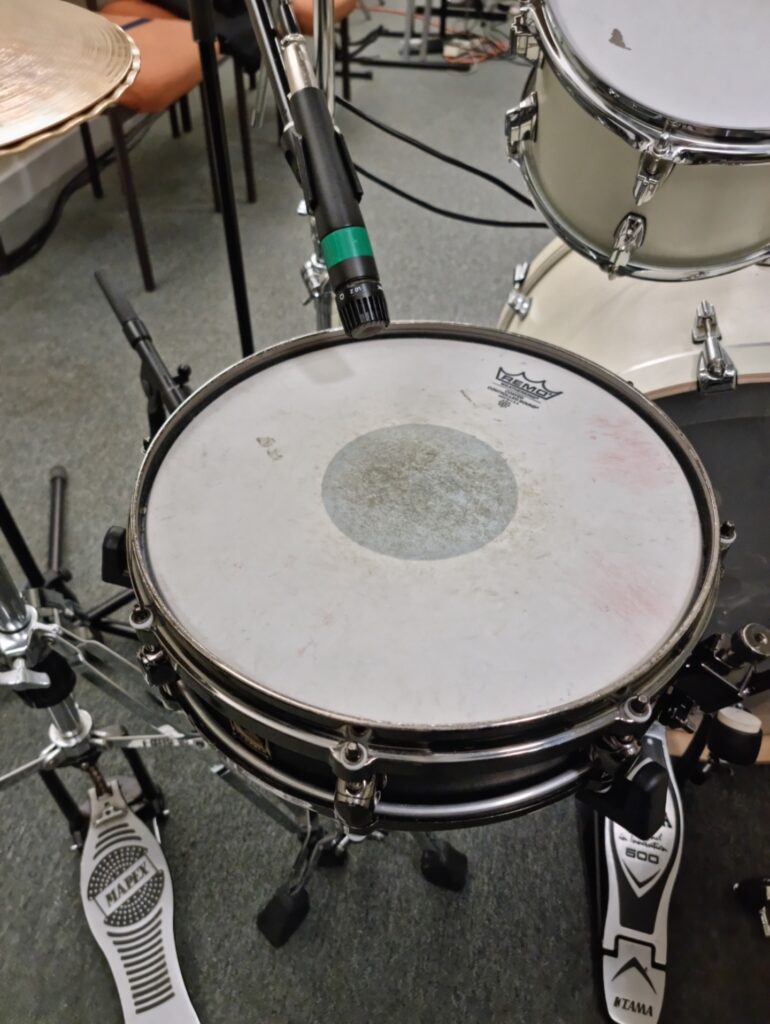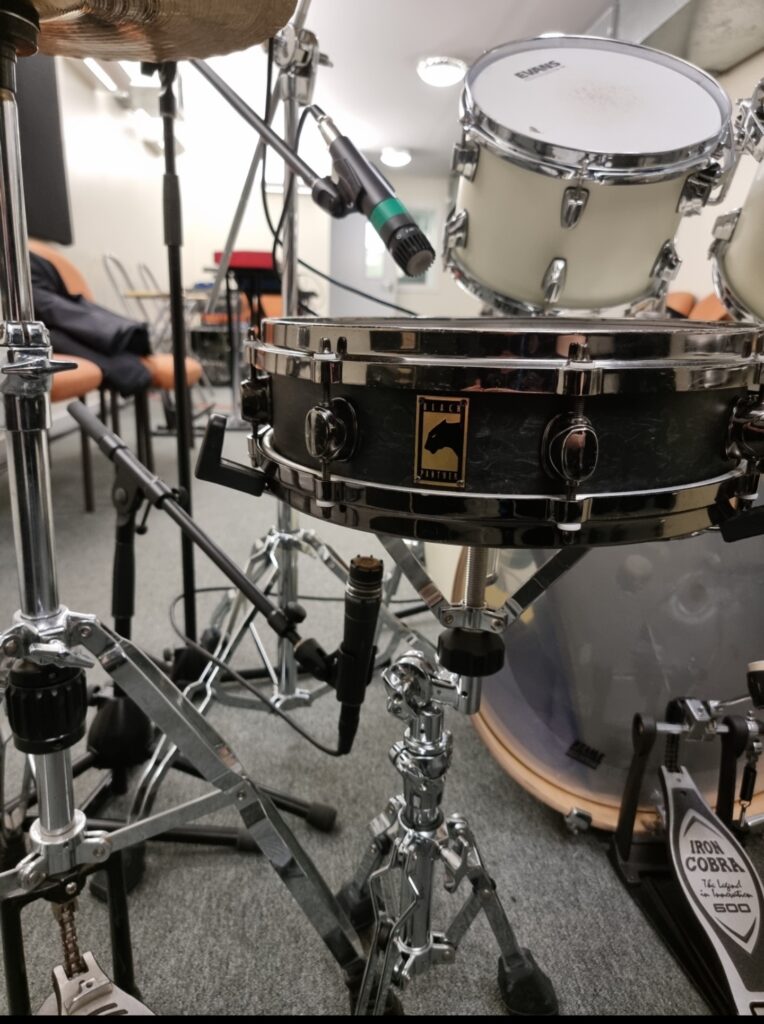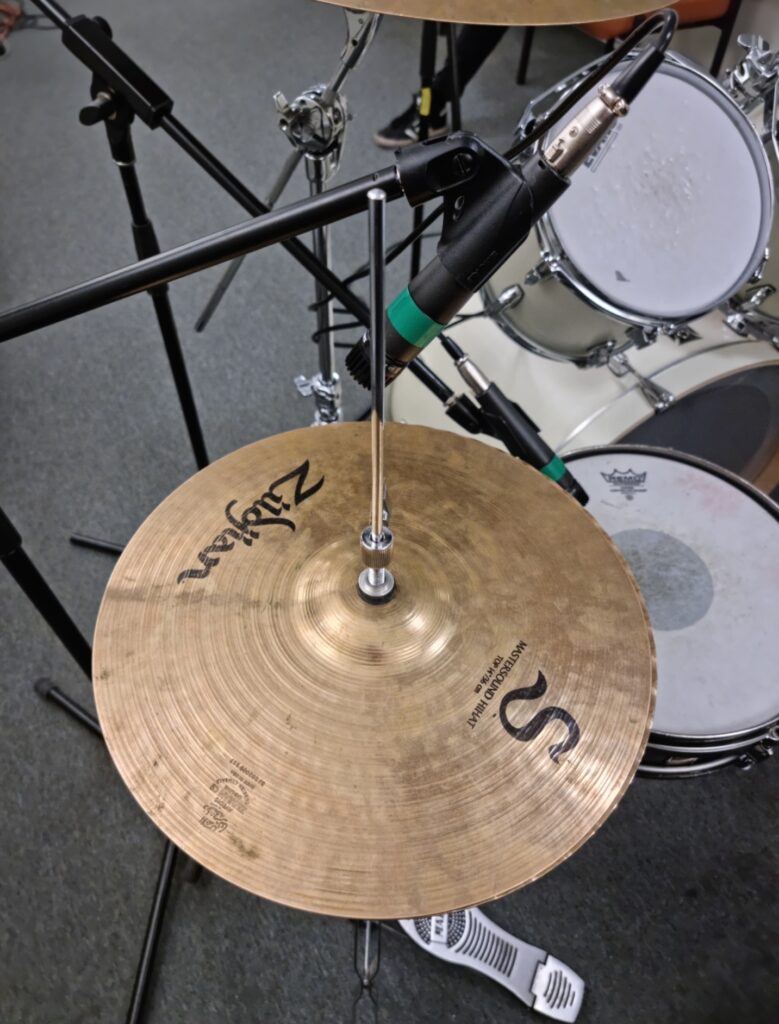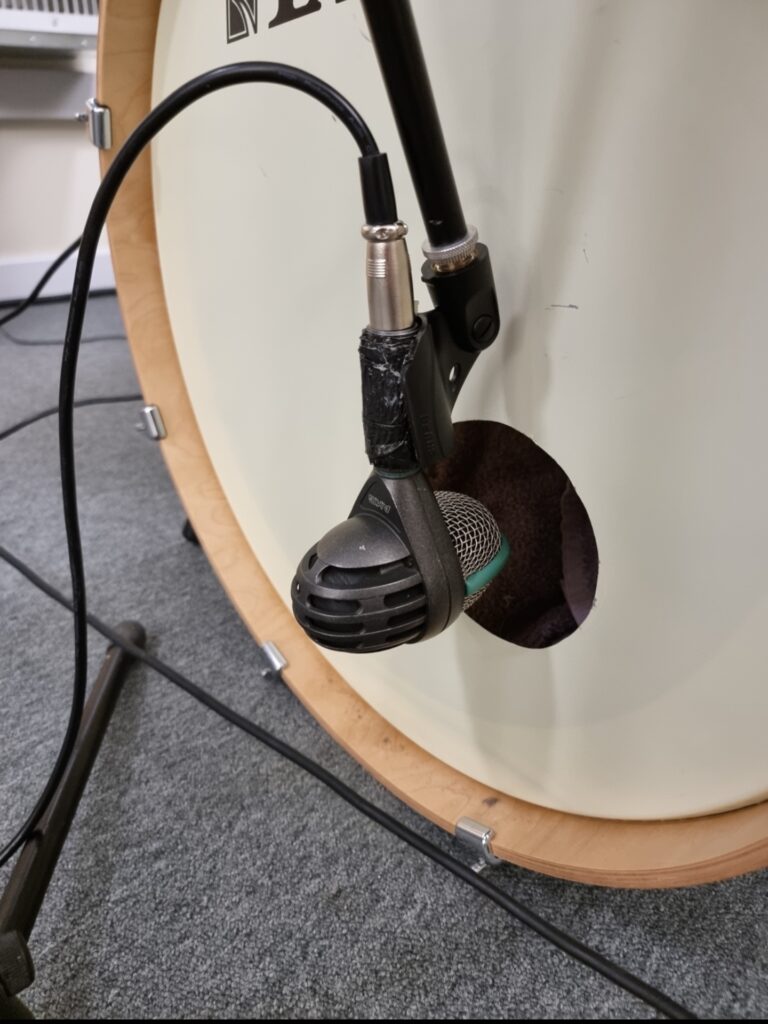When I was micing up the drums I wanted to have a top and bottom snare mic to allow me to have a better range of sounds from the snare, I positioned the top one a few inches away and facing towards the centre of the skin. The bottom one however was positioned straight up toward the bottom edge of the drum head, inspired from some videos I had watched as research. Here are the photos I took to present what I did.


once recording the sounds of the drums I found that the bottom snare mic had way too much bass when listened to separately as the rattle of other equipment and the bass drum bled through, it sounded extremely muddy, which is far from what I wanted to achieve with it. the whole recording as a whole wasn’t what I wanted. If you listen the this recording the snare has way too much of a tinny sound to it, and resonates too much. I recorded it this way because I wanted a beat that I could splice together, chop up and play with.

I this time choose to mic up the high hat following a tutorial I watched on how to do so. In the end I felt as I could definitely hear a more clear sound apposed to using overheads to record cymbals.

Originally I wanted to put the mic way further into the bass drum so I could record a punchier sound, but couldn’t physically get the mic in there with a good stand position for it, so settled for this. Again I wasn’t happy with this recording, because you can hear too much of the room and the rattle of the snares of the bottom of the snare drum, again there was too much resonance, and I wanted a punchy quick attack bass drum, but I couldn’t achieve that.
This has now lead me to use a midi kit for my track. I’ve picked a good 808 Roland kit to use which is commonly used by Aphex twin, so it still fits my project perfectly, but makes the experimentation with drum replacement redundant, however, I still may use some of the high hat sounds and the rim clicks I recorded as I feel as they can be salvaged and used.